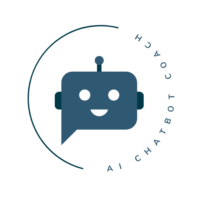AI-enabled tutoring is a novel approach to personalized learning that leverages the power of artificial intelligence and machine learning algorithms to provide tailored support to students. By analysing student data and adapting to individual learning needs, AI-enabled tutoring can improve student learning outcomes and help bridge the achievement gap. In this article, we will explore how AI-enabled tutoring works and why it is effective.

How AI-Enabled Tutoring Works
Artificial intelligence-based learning support works by examining performance data, such as their performance on quizzes and assignments, and using this data to create a personalized learning plan. This plan may include recommendations for additional practice exercises, videos, or reading materials to support the student’s learning.
AI-enabled tutoring may also incorporate natural language processing technologies to provide conversational support to students. This can include answering questions and providing feedback on assignments, allowing students to receive immediate and personalized support.
Moreover, AI-assisted education can adjust to learning pace, providing additional support or challenge as needed. This personalized approach can help students learn more effectively and efficiently.
Why AI-Enabled Tutoring is Effective
AI-driven personalized learning enhances outcomes. First, it provides a personalized approach to learning that is tailored to individual student needs. This can help students who are struggling with certain concepts to receive additional support and practice, while also providing a challenge to students who are excelling, often facilitated by AI Teaching Avatars.
Moreover, the Interactive Learning Chatbot can provide immediate feedback to students, allowing them to identify and correct errors in real-time. This can help students stay engaged and motivated, as they see their progress and receive positive reinforcement for their efforts.
Furthermore, AI-enabled tutoring can be more efficient and effective than traditional tutoring methods, as it can provide personalized support to a larger number of students at once. This can help bridge the achievement gap, particularly for students from low-income or underrepresented backgrounds, who may not have access to traditional tutoring services.
Potential Applications of AI-Enabled Tutoring
AI-Supported Education has many potential applications in education. For example, it can be used to provide personalized support to students with learning difficulties or disabilities, allowing them to receive additional support and practice exercises that are tailored to their specific needs.
AI-enabled tutoring can also be used to supplement traditional classroom instruction, providing additional support to students who may need it. Additionally, AI-enabled tutoring can be used to provide support to students in remote or online learning environments, where traditional tutoring may not be feasible.

Limitations of AI-Enabled Tutoring
While AI-enabled tutoring has many potential benefits, there are also limitations that educators must consider. One of the primary limitations is the technology’s current limitations in understanding and responding to natural language. While Machine learning-powered tutoring has improved significantly in recent years, it may still struggle to understand and respond to complex questions or nuanced language.
Another limitation of AI-enabled tutoring is the potential for a lack of human connection. While these technologies can provide personalized and immediate support to students, they cannot replace the human connection and rapport that students develop with their human teachers. This human element of education is essential for providing emotional and social support to students, which can be critical to their academic success.
Best Practices for Using AI-Enabled Tutoring
To ensure that AI-enabled tutoring is used effectively and ethically, educators should follow some best practices. These best practices include:
- Ensuring that Machine learning-powered tutoring is designed with a focus on improving student learning outcomes.
- Using AI-Supported Education in conjunction with human instructors to provide a well-rounded educational experience.
- Ensuring that the technology is accessible to all students, regardless of their background or ability.
- Regularly evaluating the effectiveness of Machine learning-powered tutoring in improving student outcomes and making necessary adjustments.
By following these best practices, educators can help ensure that Machine learning-powered tutoring is used effectively and ethically, maximizing its benefits while minimizing its limitations.

Conclusion
AI-enabled tutoring is a promising innovative approach to personalized learning that leverages the power of artificial intelligence and machine learning algorithms to provide tailored support to students. By analysing student data, adapting to individual learning needs, and providing personalized support, Machine learning-powered tutoring can improve student learning outcomes and help bridge the achievement gap.
While the technology has some limitations in understanding natural language, AI-enabled tutoring still offers many benefits. It can provide personalized support to students with learning difficulties. It can also supplement traditional classroom instruction. AI tools are useful in remote or online learning environments. By following best practices and ethical guidelines, educators can ensure AI tutoring is used effectively and responsibly. This leads to a more personalized and effective educational experience for students.
FAQs
1.How is AI-enabled tutoring different from traditional tutoring?
Machine learning-powered tutoring is different from traditional tutoring in that it leverages artificial intelligence and machine learning algorithms to provide personalized support to students. Traditional tutoring typically involves one-on-one or small group instruction with a human tutor.
2.Can Machine learning-powered tutoring replace human teachers?
No, Machine learning-powered tutoring should not replace human teachers entirely. While these technologies can provide personalized support to students, they cannot replace the human connection and rapport that students develop with their human teachers. This human element of education is essential for providing emotional and social support to students, which can be critical to their academic success.
3.Is Machine learning-powered tutoring effective for all students?
Machine learning-powered tutoring can be effective for many students, particularly those who may be struggling with certain concepts or who may benefit from additional support or challenge. However, the effectiveness of Machine learning-powered tutoring may vary depending on the specific needs and learning styles of individual students.
4.What are the limitations of Machine learning-powered tutoring?
While Machine learning-powered tutoring has many potential benefits, there are also limitations that educators must consider. One of the primary limitations is the technology’s current limitations in understanding and responding to natural language. Another limitation is the potential for a lack of human connection.

